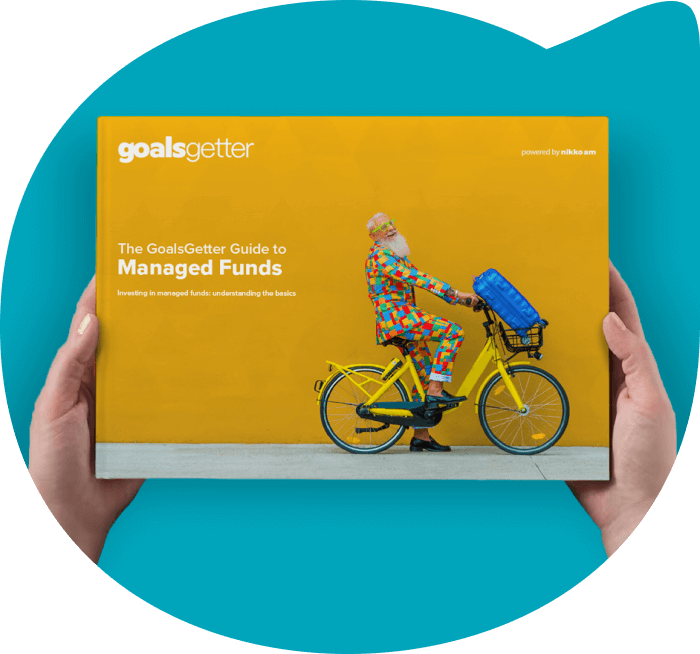Find out about the different types of managed funds
Do you have money to invest? In this article, we run through some of the managed funds available that can help you achieve your investment goals.
Managed funds in a nutshell
Individuals pool their money into a fund with other investors and, in return, receive units. Along with the value of the fund’s assets, these units fluctuate in value; however, their quantity remains the same.
DIY or engage a fund manager? Learn about the merits of DIY investing in shares compared to actively managed funds here.
Passive or active management
Throughout the world, every stock market has an index that tracks the overall performance of a group of stocks. The S&P/NZX 50, for example, tracks the 50 largest companies on the New Zealand Stock Exchange.
Managed funds can fall into two broad categories: passive and active. To illustrate how passive and active managed funds work, imagine that the NZX50 is a giant jar filled with jellybeans of many colours — red, orange, green, yellow…
In a passive fund, the manager buys every flavour — even those that aren’t so tasty. In other words, he/she tracks the index, and then whatever it does as a whole, invests in line with it. The manager doesn’t make decisions about what to buy or sell; they just follow the index.
Conversely, in an active fund, the manager is choosy about which jellybeans to buy. So, using knowledge and insight, they invest in what they believe are the best stocks (tastiest jellybeans) and avoid the bad. As a result, an active managed fund aims to outperform the benchmark.
So, when deciding between passive or active fund management, ask yourself this: Would you like any old jellybeans or just those that a fund manager hand picks for you?
Take some of the decision making pressure away. Learn about the merits of DIY investing in shares compared to actively managed funds here.
Fees
Whether your fund is passive or active, you’ll pay a fee for the manager’s work. And, as you’d expect, active management costs more because the manager doesn’t blindly follow an index. Instead, they use their expertise and insight and spend time on activities like researching companies, studying annual reports and meeting with company management.
Choosing a managed fund
Here are some things to consider when choosing a managed fund:
- Investment objective — what are you wanting to achieve?
- The desired rate of return — the higher the targeted returns, the higher the risk, so things may turn out worse than expected.
- Appetite for risk — can your nerves handle larger drops in the value of your fund from time to time?
- Available time — how long have you got to reach your investment goal?
Assets in managed funds
Managed funds can include many types of assets. Although there is almost an endless number of options, in New Zealand, you can generally place them into four broad asset categories.
- Domestic equities: These include well-known listed companies that trade on the NZX and ASX.
- Global equities: These are companies listed in off-shore stock markets, and they number in the thousands. Examples are the London Stock Exchange (LSE) and the New York Stock Exchange (NYSE). Investment in global equities provides exposure to a broad range of markets and sectors that may not be well represented by domestic equities.
- Fixed interest: This is often an investment in government or corporate bonds that yield a set level of interest for a defined term. Fixed-interest investments can be in domestic or international bonds and fixed-interest securities. The expectation is that you'll get back the amount you put in plus some interest. Active managers also try to generate some additional capital growth. Interest rates typically determine the value of fixed-interest funds.
- Cash: Not really cash, this is investment in term deposits and short-term bonds.
Asset diversification can mitigate risk. However, the first mitigant is understanding the investments in a portfolio.
Individual securities
When you invest in an individual security, the risk and return characteristic is specific to that particular investment. So, if, for example, it goes up or down by 20% in value, that’s what you get; you’ve only invested in one thing.
Sector funds
On the other hand, if you invest in a sector, like domestic equities or fixed interest, you're buying a basket of the same kind of securities. So, for example, instead of investing in one company alone, you buy into the whole NZX50. Then, if shares in a particular company decrease by 20%, but the rest of the NZX50 remains flat, the impact on your overall investment will be relatively small. You will, though, be exposed to all the equities in the index, so if they all decrease in value, so too will your investment.
Diversified funds
With a diversified fund, you invest in a basket of securities that cover multiple sectors — domestic equities, fixed interest, etc. The different types of diversified funds, such as conservative, balanced or growth, are each weighted to different sectors. The fund that is most appropriate for you will depend on your investment goals and the level of risk you’re comfortable with.
Ultimately, investing in a managed fund provides you access to asset classes that should best suit your situation and investment goals. Furthermore, you benefit from the expertise, insight and hard work of a fund manager.
Nikko Asset Management New Zealand Limited (Company No. 606057, FSP22562) is the licensed Investment Manager of Nikko AM NZ Investment Scheme, Nikko AM NZ Wholesale Investment Scheme and the Nikko AM KiwiSaver Scheme. This material has been prepared without taking into account a potential investor’s objectives, financial situation or needs and is not intended to constitute personal financial advice, and must not be relied on as such. The Product Disclosure Statements are available on our website: https://www.nikkoam.co.nz./invest/retail.



.png?width=362&name=Blue%20coin%20jar%20featured%20image%20(1).png)

